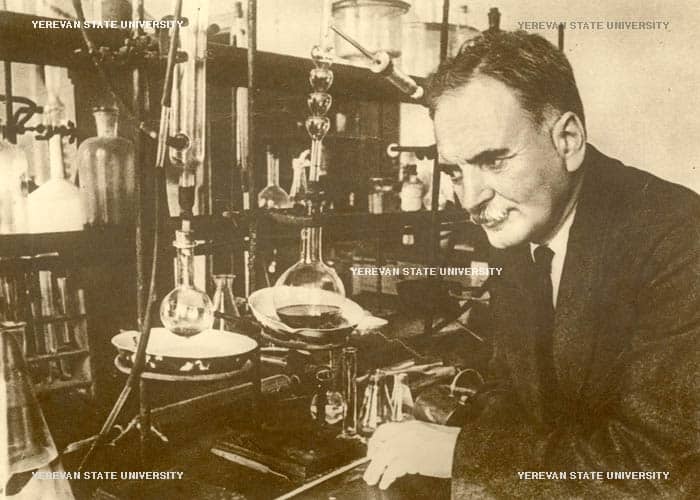BIRTH OF STEPAN GHAMBARIAN (June 23, 1879)

Stepan Ghambarian, scientist and educator, is considered the founding father of the scientific school of chemistry in Armenia. His younger brother Petros (1899-1934) was a prematurely disappeared geologist educated at the Sorbonne.
Stepan Ghambarian was born on June 23, 1879, in the small town of Kojor, near Tiflis (Tbilisi), in the family of a state employee. His family, following his father’s employment, moved to Kiev in 1884, and then to Warsaw and Prague. Ghambarian graduated from the classical gymnasium of Riga (Latvia) in 1898, and then went to study in Germany at the universities of Munich, Leipzig, and Heidelberg (1899-1906). He followed post-graduate studies, working as assistant to various renowned German professors in Strasbourg, Munich, and Berlin (1907-1911). In his German years, he was the first to study the production of radicals by super oxides. He then returned to the Russian Empire, where he first worked for three years (1911-1914) at the chemical laboratory of the Russian Technical Society of Baku, and then he moved to Tiflis, where he worked at the laboratory of chemistry and micro bacteriology of the Department of Agriculture and taught at the higher education courses for women. He also fought in World War I.
In 1920 Ghambarian settled in Yerevan. He founded and headed the chairs and laboratories of organic chemistry at Yerevan State University (1922-1937) and the institutes of Medicine, Agriculture, and Livestock Breeding and Veterinary. He was also dean of the Faculty of Chemistry at the Polytechnic Institute (now Armenian Engineering State University, 1930-1931 and 1936-1937). He was also the founder of the first library of chemistry periodicals in Yerevan. He was designated professor in 1926 and earned the title of worker emeritus of science in 1935. He was member of the presidium of the Armenian branch of the Soviet Academy of Sciences and head of the department of Organic Chemistry (1935-1937). In 1937 the Commission of Higher Qualifications of the Soviet Union granted him the second doctorate in chemistry without defending a dissertation in merit of his services to science.
He was among the founders of the factory of synthetic rubber of Yerevan, later called Nairit (1930-1937), which was inaugurated in 1940. Despite the accolades and his services to the country, however, in 1938 he had fallen victim to the wave of Stalinist repression and, under charges of being “anti-regime” and a “foreign agent,” Ghambarian was exiled to the region of Semipalatinsk between 1938 and 1944. The efforts of his colleagues in Armenia allowed his return to Yerevan after being declared innocent of all charges. He worked at the Institute of Chemistry of the Academy of Sciences of Armenia and was elected corresponding member of the Academy (1944). The years of exile took their toll on his health, and Ghambarian passed away on March 7, 1948, in Moscow. He was buried in Yerevan, where a bust at the foyer of the main entrance of Yerevan State University remembers him.
